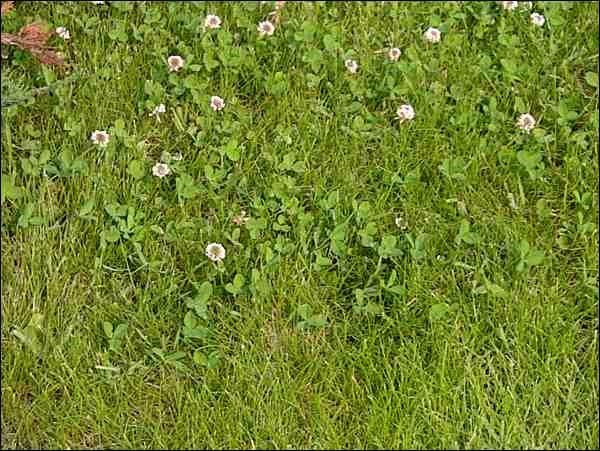Lawns have long been a status symbol, originally a sign of significant wealth. For who but the wealthy could afford to hire staff to laboriously keep an expansive sward to within a few inches? But with the invention of the gas-powered lawnmower in 1827, even the hoi polloi could afford to have a lawn. Today, a well-kept lawn is more a symbol of being a good citizen. In Saskatoon for example, "no owner or occupant of land shall cause or permit the land to become overgrown with grass or weeds." [bylaw 8175] Overgrown is defined to be in "excess of 20 cm [8 in.]." If bylaws don't work, then your neighbours' disapproving glares may convince you to tow the line.
The tricks to maintaining a good lawn are simple:
Mow regularly (every five to seven days, when it reaches eight to nine centimetres to keep the grass between five and seven centimetres. Cutting it much shorter leads to shallow root development, making a lawn less heat and drought tolerant.
Fertilize three times over the growing season, six weeks apart, starting in mid-May. Use the rate recommended on the bag. Do not apply to wet grass. Water in well.
Water regularly and deeply. Lawns require about 2.5 centimetres of water a week - apply once a week to encourage deep root development; this in turn encourages a hardier lawn. So far this year, the rain has taken care of most of the lawn's water requirements. In the heat of August, more water may be required.
Reseed bare or sparse areas and aerate compacted areas to round out your maintenance plan.
Weeds, like schoolyard bullies, take advantage of the weak. In a sparse lawn, with open or bare patches, weeds easily get established. Once established, they expand, stealing water, light and nutrients from the grass.
The best way to minimize a weed invasion is to maintain a healthy, lush lawn. But when the weed pressure from neighbouring properties is high (e.g. a nearby city park), even the best-kept lawn will sprout a few weeds. Aside from dandelions, other broadleaf weeds you may find in your lawn include clover (a good nitrogen source), ground ivy, common plantain, chickweed, black medic and pineapple weed, to name a few.
If you have only a few weeds, then spend some time on your hands and knees with a narrow trowel. Get as much of the root system as possible - dig deep. For more extensive invasions, a cocktail of 2,4-D, mecoprop and dicamba (e.g. Killex) has been the standby for decades. It controls more than 50 broadleaf weeds. For some perennial weeds or in situations where weeds have been allowed to go to seed, multiple applications may be necessary. In jurisdictions where synthetic herbicides have been banned (e.g. Manitoba) or you prefer not to use them, there are a few organic alternatives. Horticulture strength vinegar (much stronger than household vinegar) is an option. But it is non-selective and kills weeds and grass alike. Herbicidal soaps are non-selective as well. Corn gluten (also supplies some nitrogen) acts as a pre-emergent organic herbicide, preventing dandelion, plantain and a few other weed seeds from germinating - but it won't kill established weeds.
If keeping a lawn 100 per cent weed free seems like too much work, then you have two choices. First, accept that weeds are green like grass and they will mow just as easily. Or, artificial turf has come a long way from the 1970s; you really have to look twice to notice that your neighbour's perfect lawn is not real. And there's no mowing, watering or fertilizing an artificial lawn - just an occasional light vacuuming is required.
Have a gardening question? Contact GardenLine, 306-966-5865 or [email protected]
Come to the 48th Annual Lily Show at the Mall at Lawson's Height (July 18, 19),sponsored by the Canadian Prairie Lily Society (www.prairielily.ca).
- This column is provided courtesy of the Saskatchewan Perennial Society (www.saskperennial.ca; [email protected]). Check out our Bulletin Board or Calendar for upcoming horticulture events (Labour&Learn at the Forestry Farm; garden tours; garden book launches).




